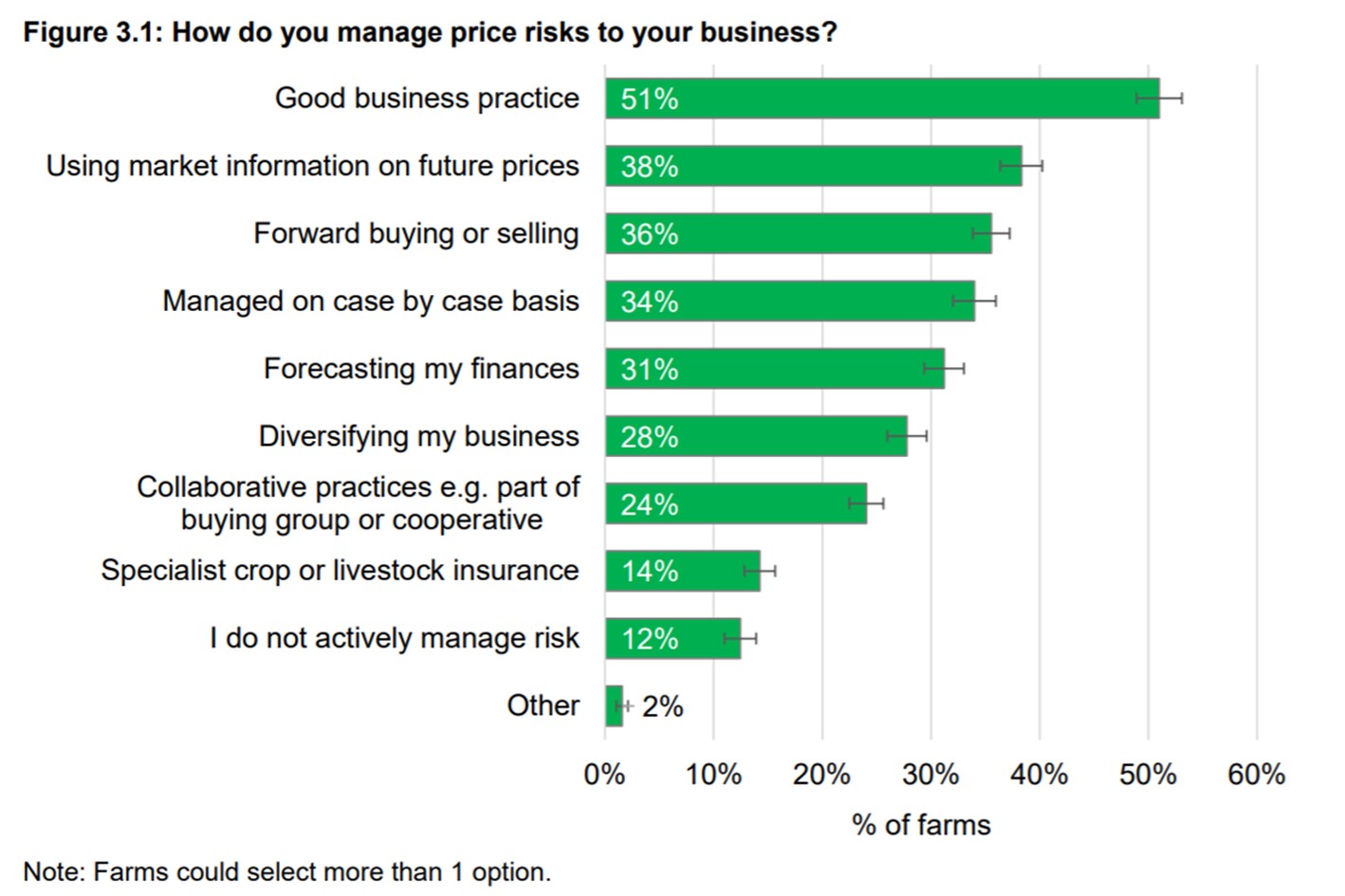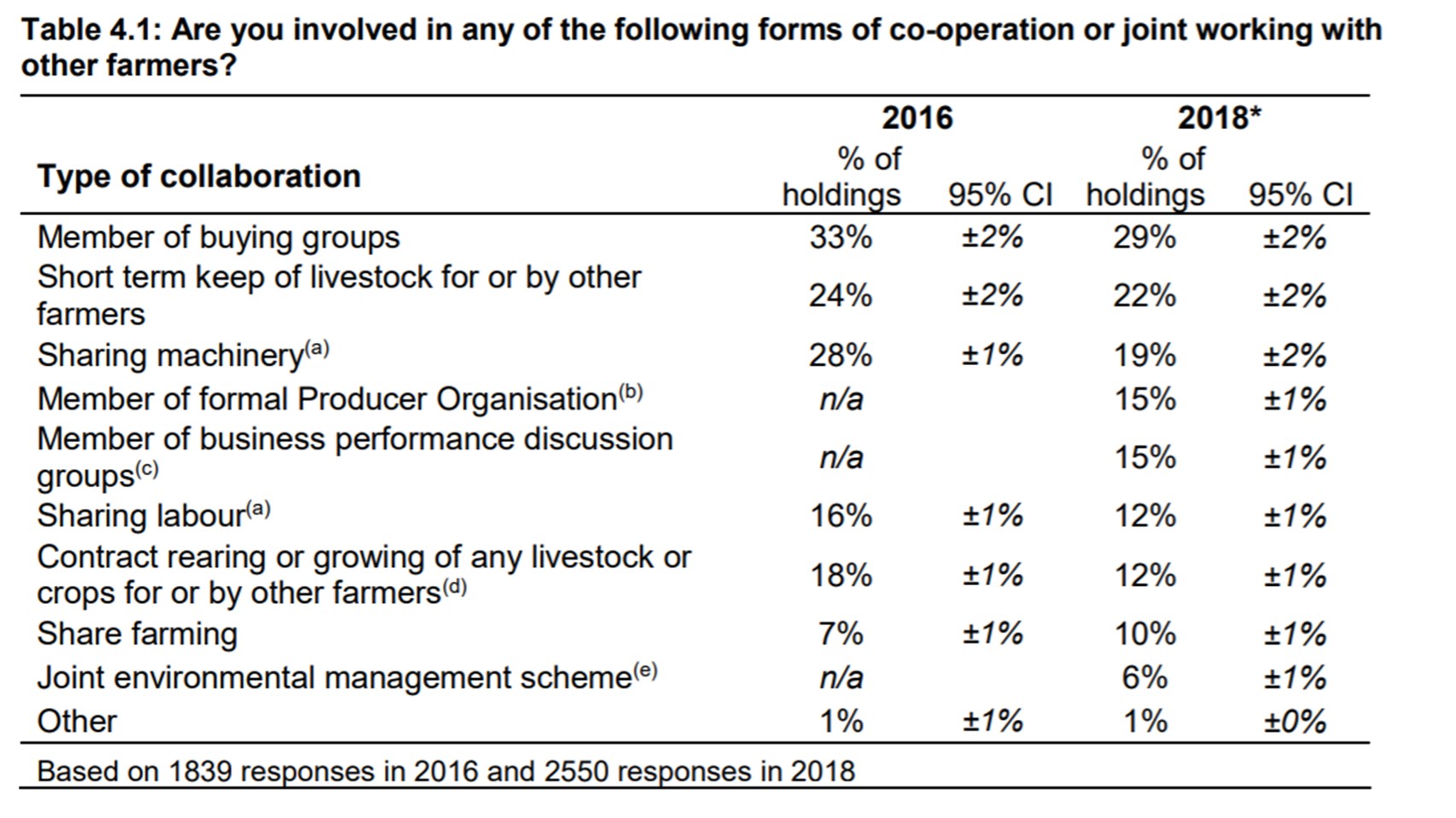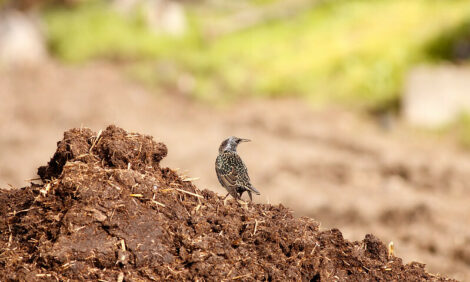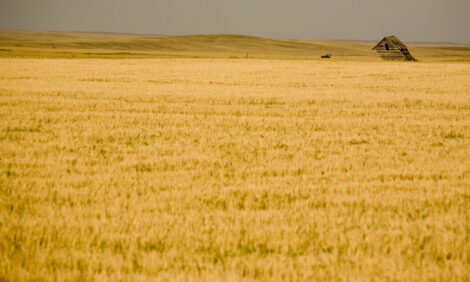



Farm Practices Survey indicates innovation is on the minds of UK farmers
The 2018 survey largely focused on practices relating to how farmers run their farm businesses. Topics covered include innovation, market prices, risk management, grants and payments, collaboration, use of accounting packages and soil management.
The Farm Practices Survey, carried out by the Department for Environment, Food and Rural Affairs (Defra), investigates the key farming practices of UK producers with the aim of providing up-to-date information on current issues to help inform policy decisions.
The results of the survey are based on questions sent to approximately 7,000 holdings in England. These holdings were targeted by farm type and size to ensure a representative sample. The survey was voluntary and the response rate was 39 percent. Thresholds were applied to ensure that very small holdings with little agricultural activity were not included in the survey. To be included in the main sample, holdings had to have at least 50 cattle, 100 sheep, 100 pigs, 1,000 poultry or 20 hectares of arable crops or orchards. Therefore, all results given in this statistical release reflect just over 60 thousand holdings that exceed these thresholds out of the total English population of almost 107 thousand commercial holdings.
Key results
Innovation
For this survey, innovation was defined specifically as being “any significant change to the farm business from a change in practice (eg installing cow tracks to enable longer grazing) to using the latest hi-tech equipment”.
54 percent of farms had introduced a significant change to their business (innovated) in the last 12 months. A third of farms (33 percent) indicated that they intended to introduce a significant change in the next 12 months.
Market prices
Controlling costs and/or maximising the value of produce are key to improving profitability. Farms were asked if they used data on input and output prices to inform business decisions, where they sourced the data and whether they thought the data was readily available and reliable.
75 percent of farms use data on market prices to inform business decisions. 76 percent thought input prices were readily available and 66 percent thought them reliable. For output prices, the proportions were 84 percent and 69 percent respectively.
Risk management
88 percent of farms indicated that they positively managed price risks to their business. 40 percent indicated that they did not have all the risk management tools they needed.

40 percent of farms indicated that they did not have all the risk management tools that they needed to manage price risks for their business.
The most commonly selected barriers, by around a third of farms were “high insurance premiums”, “Risk management tools not suitable or too expensive”, “Lack of knowledge or skills” and “Difficullty in implementation”. © Department for Environment, Food and Rural Affairs
Collaboration
Collaboration offers opportunities for farm businesses to work together, reducing costs, sharing overheads, supplying markets and providing landscape environmental outcomes.
29 percent of farms were members of buying groups, the most common form of collaboration.

Almost all farms that collaborated in 2018 reported that they had been undertaking these activities for at least a year.
(a) In 2016 these categories were separated into formal and informal arrangements.
(b) Included co-ops in 2016.
(c) Membership of discussion groups only in 2016.
(d) Collected separately for crops and livestock in 2016.
(e) Collected as Environmental management (eg joint agri-environment scheme agreement) in 2016.
*Note: In 2018 farms were asked which of these practices in the last year and for longer than a year. This might have led to a different response to farmers compared to 2016. Farms could select more than one option. © Department for Environment, Food and Rural Affairs
Accounting packages
The question specifically asked whether the farm itself used financial or management accounting software. Some farms may use accountants to prepare their accounts.
38 percent of farms used financial or management accounting software. Usage was more common on large farms than smaller farms.
Grants and payments
Farmers were asked:
- whether they had applied for any funding from the Defra group (including the Rural Payments Agency, Natural England) and the Forestry Commission;
- reasons for not making an application;
- how they heard about funding opportunities from the Defra group and the Forestry Commission;
- how funding could be made more accessible.
92 percent of farms had applied for some type of funding from Defra Group or the Forestry Commission. The most common schemes were the Basic Payment (86 percent) and agri-environment schemes (60 percent).
Soil management
Farmers were asked whether they carry out a soil structure survey in their fields to examine the soil profile and whether, in the past 12 months, this had revealed soil compaction.
55 percent of farms carry out a soil structure survey.
Read the full report online.









